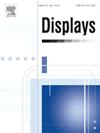From hardware to software integration: A comparative study of usability and safety in vehicle interaction modes
IF 3.7
2区 工程技术
Q1 COMPUTER SCIENCE, HARDWARE & ARCHITECTURE
引用次数: 0
Abstract
The increasing advancement of human–machine interaction (HMI) technology has brought the modes of vehicle HMI into focus, as they are closely related to driver and passenger safety and directly affect the travel experiences. This study compared the usability and safety of three vehicle HMI modes: hardware interaction (HI), hardware and software interaction (HSI), and software interaction (SI). The evaluation comprised two dimensions: usability and safety. Sixty participants’ performance on these tasks was evaluated at two driving speeds (30 km/h and 60 km/h). The results of the nonparametric tests indicated significant differences between the three interaction modes: (1) HI was the highest safety-oriented interaction mode with participants had the highest average vehicle speed and maximum acceleration measured at 60 km/h and the lowest glance frequency at both speeds; (2) HSI was the most usable interaction mode. Participants had the shortest task-completion time measured at 60 km/h and the highest score on the NASA-TLX and SUS scales taken for both speeds; (3) SI was the lowest secure and usable in-vehicle interaction mode. Participants had the longest task-completion time at 60 km/h, the highest error frequency under 30 and 60 km/h and the highest glance frequency, the longest total glance duration and the longest average glance time. In conclusion, HI and HSI were more secure and usable in-vehicle interaction modes than SI. From a theoretical exploration perspective, this paper elaborates on some exploratory thoughts and innovative ideas for practical application to the screen HMI mode selection and design in intelligent vehicle cabins.
从硬件到软件集成:车辆交互模式的可用性和安全性比较研究
人机交互(HMI)技术的不断进步使车辆人机交互模式成为关注的焦点,因为这些模式与驾驶员和乘客的安全息息相关,并直接影响出行体验。本研究比较了三种车载人机交互模式的可用性和安全性:硬件交互(HI)、软硬件交互(HSI)和软件交互(SI)。评估包括两个方面:可用性和安全性。在两种驾驶速度(30 公里/小时和 60 公里/小时)下,对 60 名参与者在这些任务中的表现进行了评估。非参数检验结果表明,三种交互模式之间存在显著差异:(1) HI 是安全性最高的交互模式,参与者在 60 km/h 时的平均车速和最大加速度最高,在这两种车速下的注视频率最低;(2) HSI 是可用性最高的交互模式。以 60 km/h 的时速测量,参与者完成任务的时间最短,两种速度下的 NASA-TLX 和 SUS 量表得分最高;(3) SI 是安全性和可用性最低的车内交互模式。参试者在 60 公里/小时时完成任务的时间最长,在 30 公里/小时和 60 公里/小时时出错频率最高,注视频率最高,总注视时间最长,平均注视时间最长。总之,HI 和 HSI 是比 SI 更安全、更可用的车内交互模式。本文从理论探索的角度,阐述了在智能车载驾驶室屏幕人机交互模式选择和设计方面的一些探索性思考和创新性想法,供实际应用。
本文章由计算机程序翻译,如有差异,请以英文原文为准。
求助全文
约1分钟内获得全文
求助全文
来源期刊

Displays
工程技术-工程:电子与电气
CiteScore
4.60
自引率
25.60%
发文量
138
审稿时长
92 days
期刊介绍:
Displays is the international journal covering the research and development of display technology, its effective presentation and perception of information, and applications and systems including display-human interface.
Technical papers on practical developments in Displays technology provide an effective channel to promote greater understanding and cross-fertilization across the diverse disciplines of the Displays community. Original research papers solving ergonomics issues at the display-human interface advance effective presentation of information. Tutorial papers covering fundamentals intended for display technologies and human factor engineers new to the field will also occasionally featured.
 求助内容:
求助内容: 应助结果提醒方式:
应助结果提醒方式:


